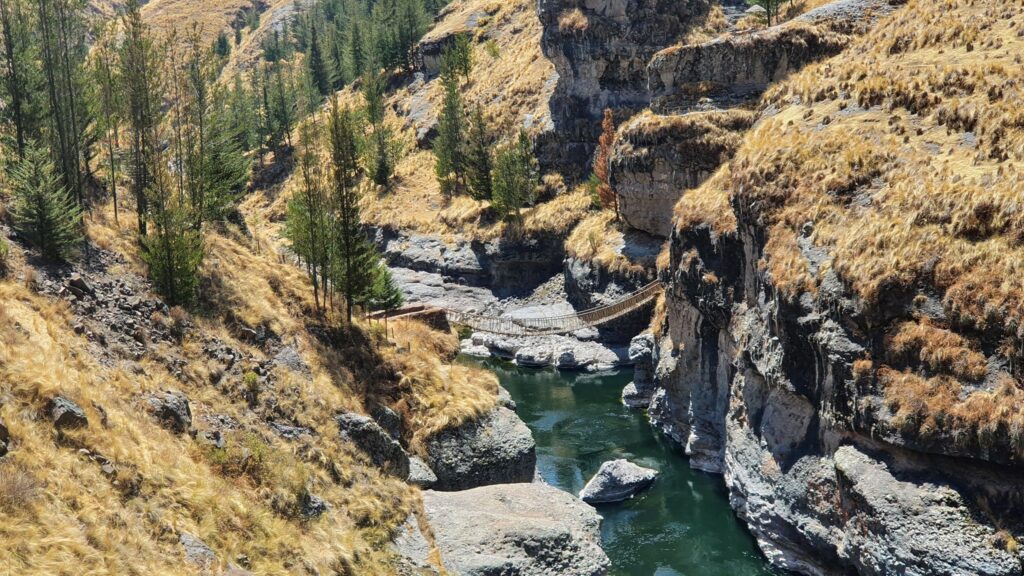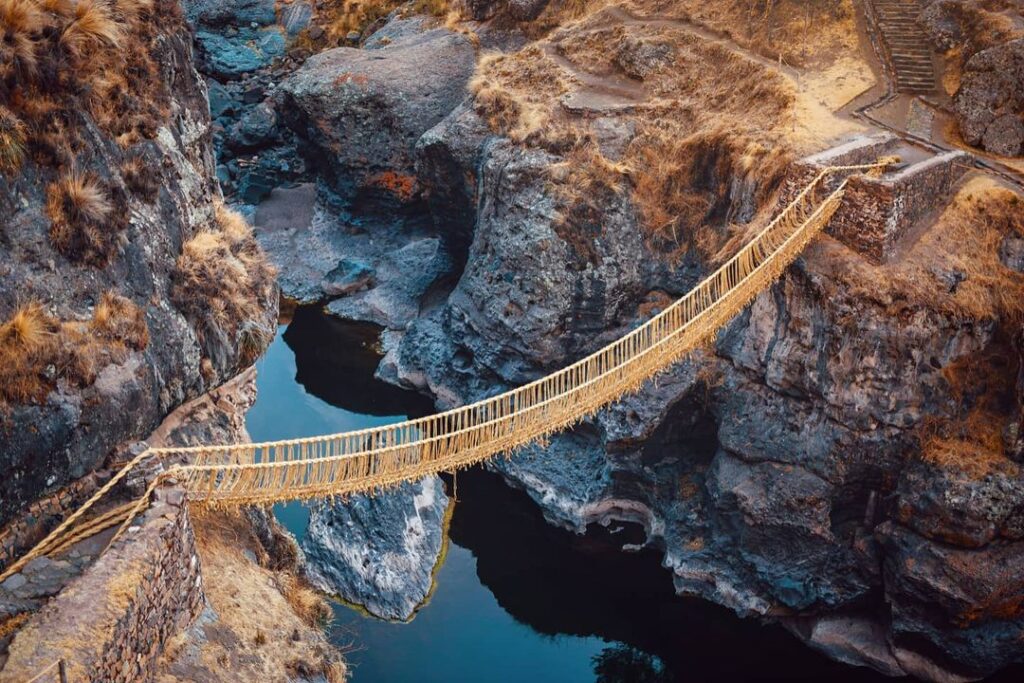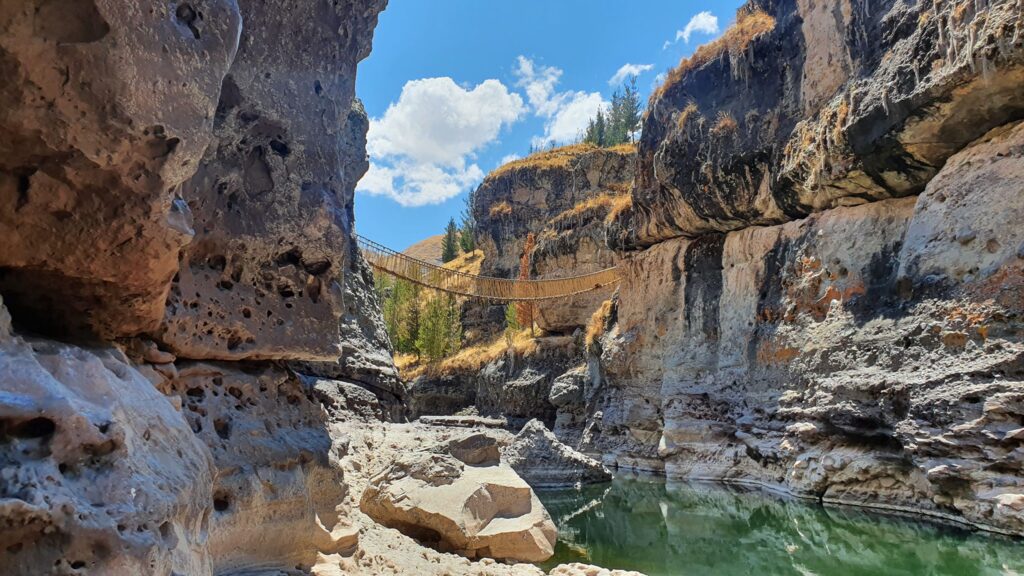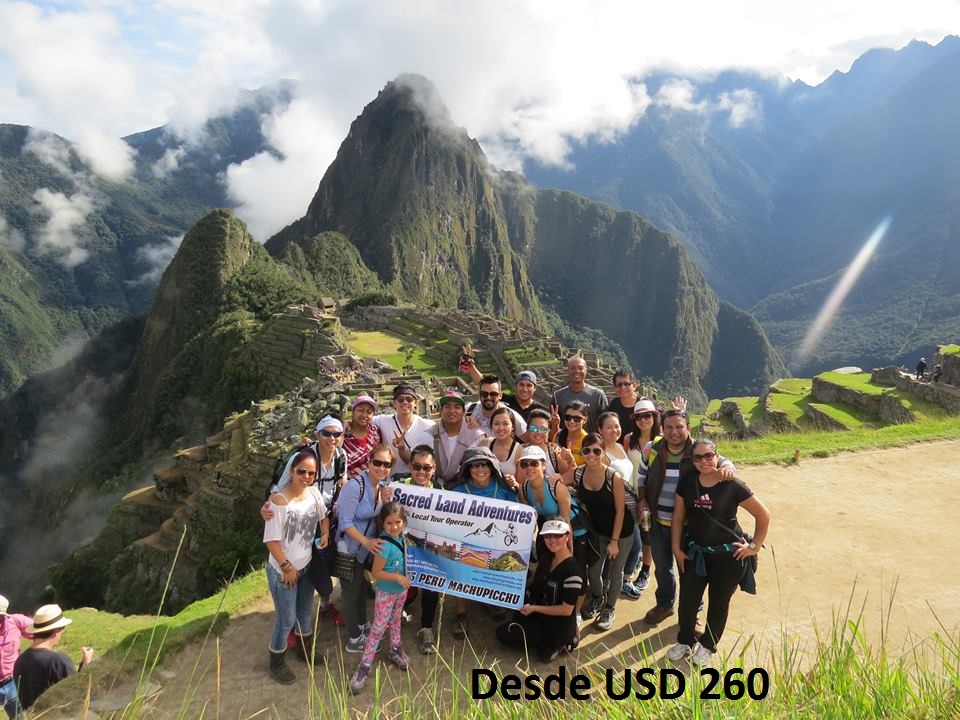Q’eswachaka Inca Bridge
Q’eswachaka Inca Bridge
Q’eswachaka, one of the last hand-woven Inca bridges, crosses the Apurimac Canyon in Peru.
KNOWN AS Q’ESWACHAKA, Queshuachaca or Keshwa Chaca, this is one of the only remaining examples of the hand-woven Inca bridges that were once common on the Inca road system
Keshwar=Tejer o trenzar a mano y Chaca= puente
Made of woven grass, the bridge spans 118 feet and hangs 60 feet above the canyon’s rushing river. Inca women braided small, thin ropes, which the men then braided back into large support cables, much like a modern steel suspension bridge. Hand-woven bridges have been part of the road and highway system for over 500 years, and were held in very high regard by the Incas. The punishment for altering such a bridge was death.
However, over time, the bridges deteriorated or were removed, leaving the latter testament to Inca engineering. The sinking of the bridges was addressed by destroying and rebuilding it in an annual ceremony, originally considered a social obligation under Inca rule, and now preserved as a way to honor their history by the nearby community of Quehue, Peru. This bridge has been named with a traditional Inca ceremonial bridge blessing and is in very good condition.
Every June, Quechua communities gather on the banks of the Apurimac River to renew the bridge. On this day, they express their honor to Pachamama, Mother Earth, and contemplate archaic traditions. When the work is done, people thank the Apus (mountain spirits) and then celebrate with music, traditional food and drinks.
Tour DAY (s)
Daily DeparturesCertified guides
Travel and tourism agencyEvery month
Daily tripsTransportation included
Daily tripsPrice: $ /pax
CONTACT US
We are here to help. If you have any questions, call us:
(+51) 984 145 793
(+51) 84 254 776
info@toursperumachupucchu.com
sacredland.adventures@gmail.com
















